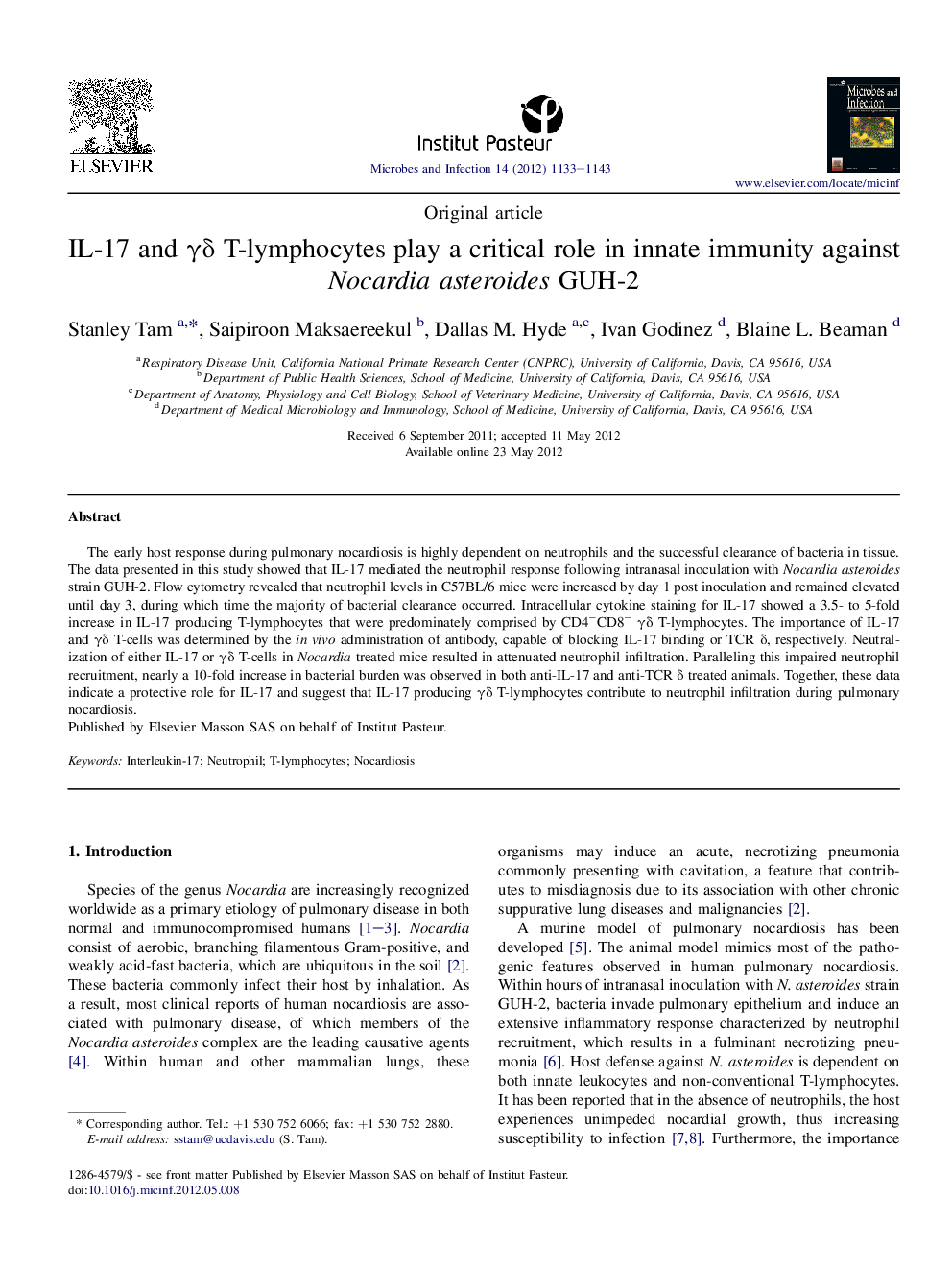| Article ID | Journal | Published Year | Pages | File Type |
|---|---|---|---|---|
| 6135947 | Microbes and Infection | 2012 | 11 Pages |
Abstract
The early host response during pulmonary nocardiosis is highly dependent on neutrophils and the successful clearance of bacteria in tissue. The data presented in this study showed that IL-17 mediated the neutrophil response following intranasal inoculation with Nocardia asteroides strain GUH-2. Flow cytometry revealed that neutrophil levels in C57BL/6 mice were increased by day 1 post inoculation and remained elevated until day 3, during which time the majority of bacterial clearance occurred. Intracellular cytokine staining for IL-17 showed a 3.5- to 5-fold increase in IL-17 producing T-lymphocytes that were predominately comprised by CD4âCD8â γδ T-lymphocytes. The importance of IL-17 and γδ T-cells was determined by the in vivo administration of antibody, capable of blocking IL-17 binding or TCR δ, respectively. Neutralization of either IL-17 or γδ T-cells in Nocardia treated mice resulted in attenuated neutrophil infiltration. Paralleling this impaired neutrophil recruitment, nearly a 10-fold increase in bacterial burden was observed in both anti-IL-17 and anti-TCR δ treated animals. Together, these data indicate a protective role for IL-17 and suggest that IL-17 producing γδ T-lymphocytes contribute to neutrophil infiltration during pulmonary nocardiosis.
Related Topics
Life Sciences
Immunology and Microbiology
Immunology
Authors
Stanley Tam, Saipiroon Maksaereekul, Dallas M. Hyde, Ivan Godinez, Blaine L. Beaman,
